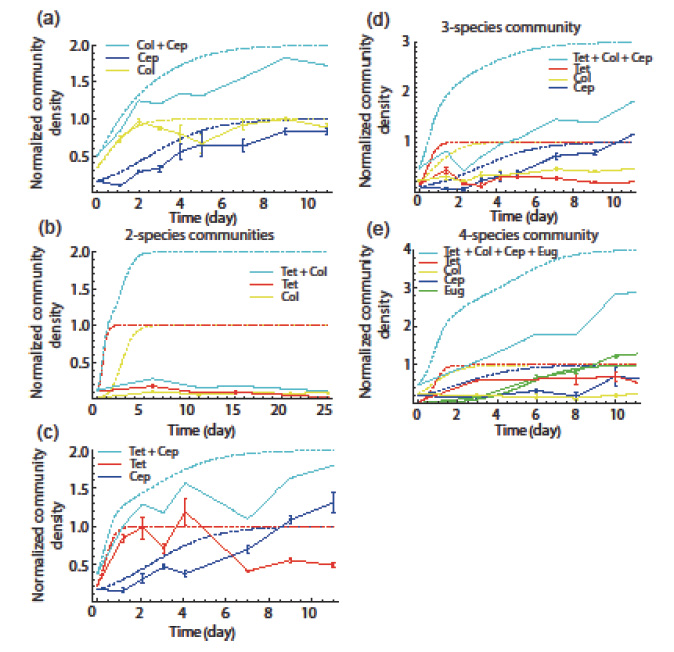
Ecological Archives E096-119-A2
Francesco Carrara, Andrea Giometto, Mathew Seymour, Andrea Rinaldo, and Florian Altermatt. 2015. Experimental evidence for strong stabilizing forces at high functional diversity of aquatic microbial communities. Ecology 96:1340–1350. http://dx.doi.org/10.1890/14-1324.1
Appendix B. Time series of protists’ density from the interaction experiments.
Fig. B1. Time series of protists' density from the interaction experiments. For the 2-species combinations: (a) Colpidium sp. and Cephalodella sp. (blue), (b) Colpidium sp. (yellow) and Tetrahymena sp. (red), (c) Cephalodella sp. and Tetrahymena sp., (d) the same three species together, (e) the three species in combination with Euglena gracilis (green). Solid lines are the average ± s.e.m. over six experimental replicates, dashed lines of the same color represent the theoretical expectation for single species, without the interaction coefficient (i.e., the logistic equations, density is normalized to each species' carrying capacity.). In cyan, the sum of the experimental density (solid lines) and of the 1-species density (dashed lined) without interaction is plotted. A complete additive community (A = 1) would follow the dashed cyan curve. Panels are ordered with an increasing gradient of functional diversity. An additive partitioning analysis revealed that the relative importance of complementarity over selection effects was increasing with increasing functional diversity.